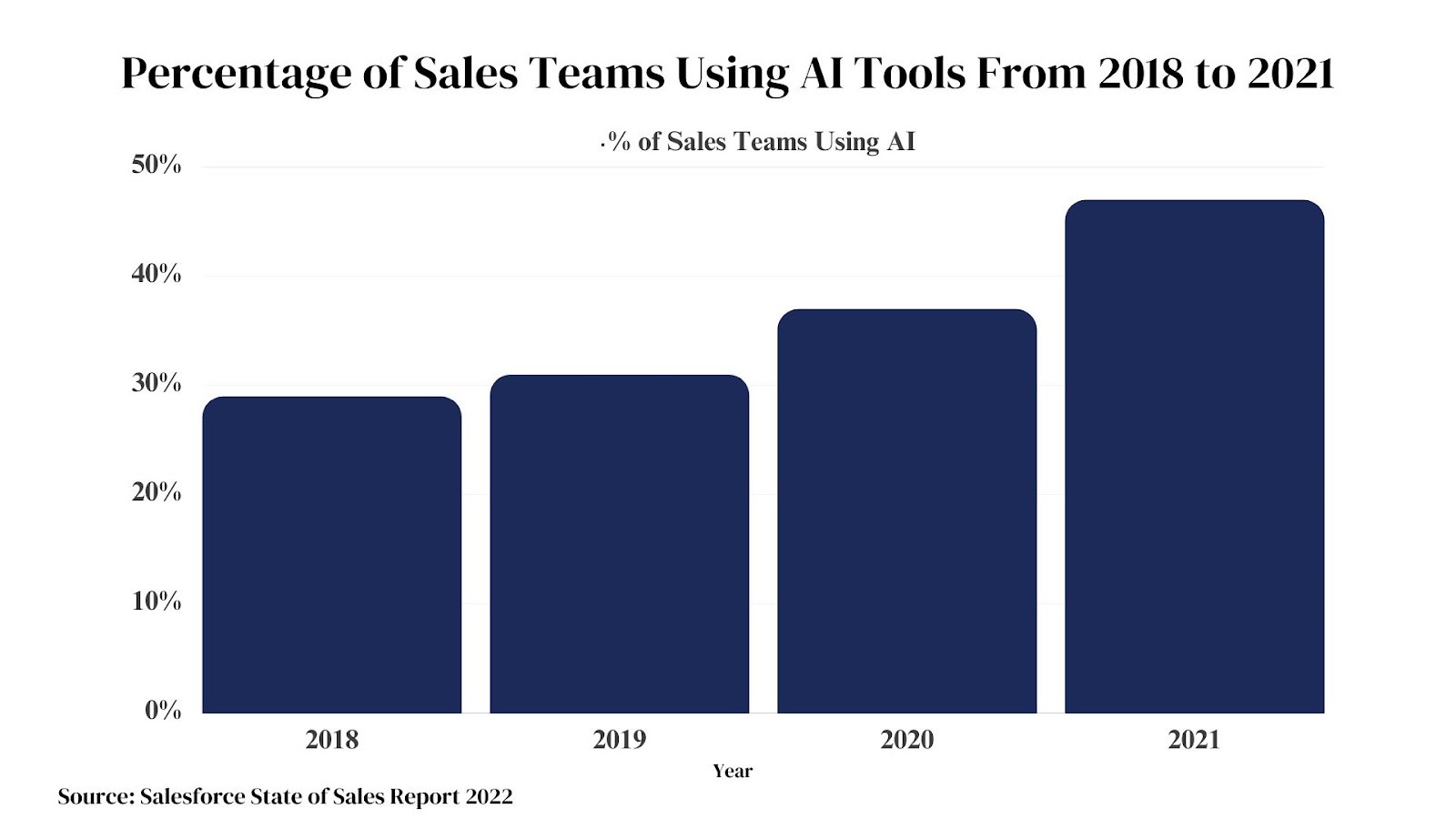Doing business today is all about using technology. Customers want to connect through websites, apps, and social media. To keep up, companies need to go digital too. This means switching old ways of doing sales to new digital solutions.
It may seem hard at first. But upgrading to digital sales tools has big benefits. Let’s look at how to start this transition. And how it can improve your sales operations.
Why Go Digital?
Going digital helps sales teams be:
- More engaged with customers
- Flexible in how they sell
- Better at closing deals
Digital tools allow 24/7 access to data. Sales reps can use this to be responsive to buyers. They can answer questions faster with mobile apps. And video chat to connect on a personal level.
Artificial intelligence (AI) assists sales teams too. It tracks buyer behavior online. Then suggests ways to approach each customer. This makes outreach more 1-on-1.

The adoption of AI tools by sales teams has grown significantly over the past few years. This underscores how digital solutions are becoming mainstream for sales operations.
Building the Right Team
To go digital, companies need a strong tech and sales team. Leaders should have experience in both areas. This helps them see the bigger picture. And guide teams successfully.
Cross-functional teams also boost results. Salespeople know what the buyer needs best. Engineers provide tech know-how. Working together, they build tools that truly help representatives sell.
Experts suggest starting small. Assign a pilot digital project to part of the sales team. See what works well. Once you’ve accomplished that, you can then scale it to the desired level.
Setting Clear Goals
Digital solutions only work if adopted company-wide. To drive this change, set clear targets. Make sure they align with business objectives. Track progress with key performance indicators (KPIs).
Some goals to target:
- Customer satisfaction ratings
- Sales conversion rates
- Revenue from online channels
Update legacy systems if needed. Provide training and support. This includes activities like user provisioning to ensure sales teams have access to the latest tools. Proper enablement empowers sales teams to use new tech. It also improves adoption across the company.
Taking an Agile Approach
“Agile” means responding quickly to change. This mindset is key for digital sales tools. Technologies and buyer expectations evolve rapidly.
Agile teams constantly test and refine solutions. They focus on pilot projects first. Then scale what works. This allows for flexibility. And ensures tools meet real-world needs.
| Traditional | Agile | |
| Mindset | rigid, fixed plans | flexible, open to change |
| Execution | strict project phases | iterative testing and improvement |
| Team | siloed departments | cross-functional collaboration |
| Focus | completeness | business value delivery |
| Timeline | long development cycles | rapid sprints and releases |
Agile sales teams operate differently than traditional teams. This comparison highlights the key differences in mindset and practices.
Leading companies like GE, Target, and Nokia use agile sales methods. Their teams feel ownership over solutions. And can deliver value faster to customers.
Changing Mindsets
Beyond new tech, digital transformation requires a culture shift. Everyone in the company must embrace new ways of working.
Begin by updating training programs. Help sales teams learn digital platforms hands-on. Show how AI insights can boost conversions. And make their jobs easier.
Foster an agile and collaborative spirit across teams. Reward those who champion change. This motivates staff at all levels to go digital.
Getting Buy-in From Your Team
Making sales reps excited about new tech is key. Have team leaders explain how it will make work easier. Be patient with adoption concerns. Set up tech training webinars tailored to your products. Celebrate when reps make their first online sales. Give shout-outs at meetings for digital wins. Keep morale up during the transition. Digital success depends on everyone being on board.
Success Stories
The insurance firm Lemonade went fully digital from the start. They use chatbots for customer service. And algorithms to pay claims within minutes. By leaning on tech, they grew into a billion-dollar business.
Guidant Financial switched to digital files and signatures. Their sales cycle shortened from 50 days to 5. Reps connect faster with small business owners online. Lending jumped from $250 million to $1.1 billion per year.
These examples show what is possible. Digital solutions, when executed well, transform sales. They drive rapid growth in revenue, efficiency, and customer satisfaction.
Key Takeaways
Upgrading sales tech is a journey. Following best practices helps ensure a smooth ride:
- Assemble teams with sales, tech, and management skills.
- Set targets tied to business goals and metrics.
- Take an agile and flexible approach.
- Motivate staff to adopt new digital mindsets.
With the right digital tools, sales teams can be more productive. Companies can better engage and serve buyers across channels. And sustain growth in a digital-first market. The time for action is now.
Hope this gives you ideas on digitizing sales for the modern buyer! Let me know if you need any clarification or have additional questions.
FAQs
1. What are some good apps and websites for digital sales?
Some popular tools are Salesforce, Zoho CRM, Facebook ads, and LinkedIn Sales Navigator. These help sales teams connect with buyers online. LinkedIn Sales Navigator not only facilitates lead generation but also allows users to export lists from sales navigator.
2. How much does it cost to go digital with sales?
Costs vary based on company size and tools used. Startups can get basic tools for $50-$100 per month. Large companies spend more on advanced systems. Focus on return on investment.
3. How long does it take to switch to digital sales?
The transition can take 3-6 months to roll out company-wide. Start with a pilot group first. Then expand tools and training gradually. Move faster by getting employee buy-in.
4. What if our sales team hates technology?
Make training fun and hands-on. Show how new tools will make sales reps’ jobs easier. Have tech-savvy reps mentor others. Offer incentives for achieving digital milestones.
5. How do we know if our digital approach is working?
Track sales KPIs like lead conversion rates. See if revenue from online channels is growing quarter to quarter. Survey customers for feedback on digital experience.
6. Who should lead our sales digitalization effort?
Appoint a project lead well-versed in sales and technology. Have them work closely with executives, IT, and sales managers. Engage a consultancy if needed for extra expertise.












